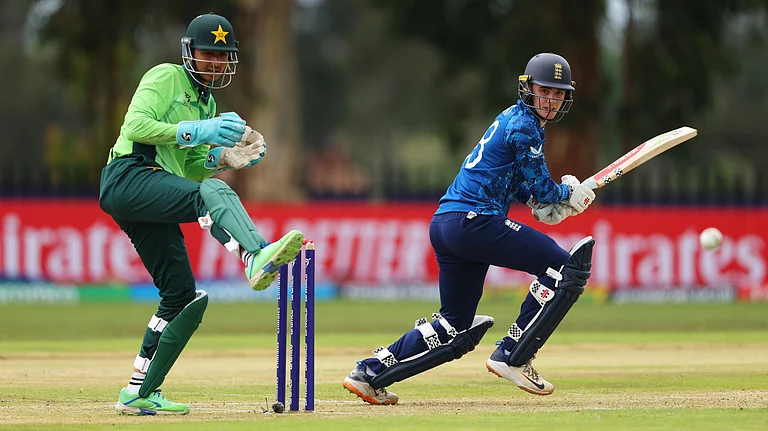As the 173-year-old state of Jammu and Kashmir was bifurcated into two Union Territories (UTs) on August 5, 2019, a number of things changed in the erstwhile state.
The Buddhist-majority Leh erupted in jubilation because people there hoped the move would safeguard their lands and livelihoods. There was a general impression that while the August 5 move generated a lot of resentment in the Kashmir Valley, there was a festive mood in Jammu and Ladakh regions.
However, three and a half years down the line, the reality on the ground is much more complicated.
The August 5 change came in a package. Besides reading down of Article 370 of the Constitution of India, the withdrawal of Article 35A left Ladakhis bereft of the safeguards which it gave vis-a-vis preference in government jobs and educational places to state residents. Many felt that Ladakh’s UT status also debilitated the independence of the hill development councils.
Once the implication of all the moves made on August 5 began to transpire and people realised it would have consequences beyond the Valley’s borders, worry and concern began to replace celebrations.
In the erstwhile state of Jammu and Kashmir, Ladakh had two members of the legislative assembly —one for Leh and one Kargil— and one member of the legislative council from both the districts, including the hill development council. With August 5 move, while J&K got a legislature, Ladakh was declared a UT without legislature. This made people realise that they had less to celebrate and more to introspect. People were happy that they became a UT but their demand was UT with a legislature, where the local people could have a say in governance.
A year after Ladakh was made into a UT, the Kargil Democratic Alliance (KDA) and Leh Apex Body (LAB), an amalgam of trade unions, social, political and religious groups from Ladakh, came together with their four-point demands which comprises of sixth schedule status under the Constitution; job reservations; a separate Public Service Commission; and two parliamentary seats Leh and Kargil. They are also calling for increased political representation in the form of two Lok Sabha seats and one Rajya Sabha seat, as well as job reservations for Ladakhis and the recruitment on around 12,000 posts based on the old state subject laws previously in place.
On January 12, the Centre replaced the Lieutenant Governor of Ladakh amidst intensified protests by civil society groups. The failure to control the agitation was believed to be a major reason for the change in leadership. However, despite the change, the ground situation remained unchanged. Just after three days of Brig. (Dr.) B.D. Mishra (Retd)settling in his new role, on January 15, these umbrella outfits, came out in the open held a joint protest march in Jammu where they declared their intention of intensifying their struggle and holding a protest demonstration in Delhi’s Jantar Mantar.
The talks held by the Union Ministry of Home Affairs (MHA) with the protesting bodies have been largely unsuccessful. Therefore, on January 3, the MHA set up a 17-member high-powered committee, headed by Union MoS (Home) Nityanand Rai. The committee was formed to discuss measures to protect the region’s “unique culture and language” taking into consideration its geographical location and its strategic importance.
Earlier this year, the apex body unanimously decided to not participate in the committee's proceedings until their demands, such as an early recruitment process and the formation of a Ladakh Public Service Commission, are included in the agenda of the high-powered committee formed by MHA.
Kargil-based activist Sajad Kargili notes that the Union government deceived the people of Ladakh by making it a separate UT, taking away their representation and leaving them unsure where to take their grievances. Kargili feels that the previous arrangement of being a part of Jammu and Kashmir was better than being a UT.
Both Leg Apex Body and Kargil Democratic Alliance will mobilise people and raise awareness about their rights in the time to come, says Kargili.
It's worth noting that while the Union Home Ministry has introduced several laws to the UT of Jammu and Kashmir, it has refrained from extending any central law to Ladakh. It still has some old laws that safeguard the rights of its residents in terms of jobs and land but no central law has been extended to the region.
The high-powered committee inter alia included nine representatives of The Leh Apex Body (LAB) and Kargil Democratic Alliance (KDA), but they overtly rejected it, saying they would boycott it until the inclusion of the four-point agenda in the discussion.
Traversing through last three-and-a-half years, one can clearly see the dramatic shift of Ladakhis from being vehement supporters of August 5 decision to vehement opponents of the same. This recent decision of boycotting the committee until their demands are met speaks volumes about their frustration and dissatisfaction. The lack of progress has led to a feeling of betrayal and disappointment among them. The situation in Ladakh is one where the people feel that their development is being controlled by someone else rather than being driven by themselves, which has resulted in resentment and dissension. If their demands continue to be ignored, the situation is likely to worsen.
Sonam Wangchuk, once one of the prominent supporters of Bharatiya Janata Party’s (BJP) 2019 decision, is now at the forefront of the agitation. As he realised the change would have more drawbacks than the promised “prosperity and development”, he began seeking national attention on the demands raised by going for five-day climate fast.
Wangchuk’s hope for development and prosperity like other Ladakhis has been replaced by anger and desperation now. He is desperately seeking more autonomy to safeguard lands and livelihoods of the residents of the sparsely-populated region. Buddhist Muslims and Buddhists —divided for more than six decades— are now unitedly and vociferously asserting that they were better off with Jammu and Kashmir than today’s union territory.
As protests are flaring up, the recent developments in the Ladakh have driven the Centre into a corner. After August 5 move, while BJP was expecting fulminations from valley, they were optimistic about Ladakh. BJP was expecting the festive mood in Ladakh would be long-lasting — which didn’t happen. All this is ironic for BJP.
Despite its electorally-insignificant population, Ladakh has immense economic potential, including water resources, minerals, and renewable energy sources. With tensions mounting, it’s time for the Indian government to take a closer look and be more vigilant at China’s strategic moves in the region and make necessary adjustments. The people of Ladakh deserve to be heard, and ignoring their demands could have dire consequences for both the region and the establishment.
(Nasir Khuehami is the National Convenor of the J&K Students Association. He is pursuing Masters in Conflict Analysis and Peace Building from Jamia Milia Islamia, Delhi. He can be reached at khuehamiayaan@gmail.com.)
(Ummar Jamal is the National Spokesperson of the J&K Students Association. He is Pursuing BA. LLB from Kashmir University, Srinagar. He can be reached at ummarjamal968@gmail.com.)
(Views expressed are personal to authors.)





















